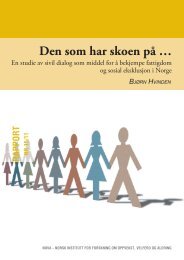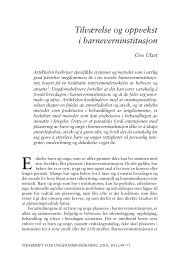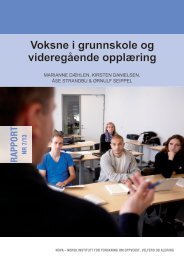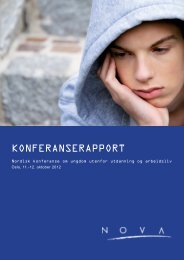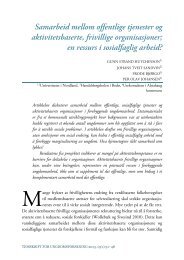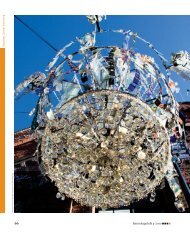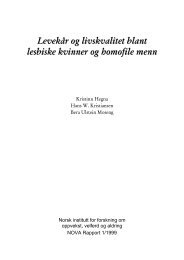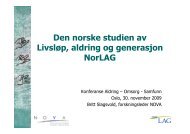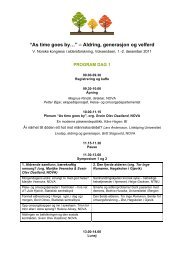NOVA Rapport 18/11
NOVA Rapport 18/11
NOVA Rapport 18/11
You also want an ePaper? Increase the reach of your titles
YUMPU automatically turns print PDFs into web optimized ePapers that Google loves.
children and youth. Participating in the project are the health services, the<br />
educational- psychological services, Child Welfare Services and the<br />
coordinator for interdisciplinary collaboration for children and youth. During<br />
the project period this municipality also collaborated with Oslo University<br />
College on teaching 80 employees about interdisciplinary interaction.<br />
Bærum participated with a model that consisted of collaboration<br />
between the Child Welfare Services and Child and Adolescent Psychiatry.<br />
They have focused on developing their joint expertise and intensifying the<br />
collaboration between ten employees in each of the two services. They intend<br />
to transfer their good experiences to other collaborative constellations. While<br />
they were developing their competences, they also worked together on cases<br />
that involved other agencies. Network meetings and kickoffs were essential to<br />
getting the interaction started.<br />
The aim of the evaluation has been to evaluate and describe changes in<br />
the interdisciplinary and interdepartmental collaboration during the project<br />
period. Only 14-<strong>18</strong> months passed between the first and second collection of<br />
data, which limits the likelihood of there having been any major changes in<br />
the municipalities. Organizations take time to change, and a year and a half<br />
is a short time in this respect. Municipalities usually also have several projects<br />
going on at the same time, which makes it difficult to know what is caused<br />
by which process.<br />
In our evaluation we have looked at criteria that characterize good types<br />
of cooperation. Amongst these are; regular meetings, clear allocation of<br />
responsibility, formalized routines, management follow-up and the correct<br />
skills and knowledge. Other characteristics of collaborative competence are<br />
knowledge about each others routines, work practices, duty of confidentiality<br />
and informing. The intent has been to understand which processes the<br />
employees have participated in and their experiences.<br />
We collected data for the evaluation twice. The first round was in the<br />
fall of 2009 in four of the municipalities and in January 2010 in the last two<br />
municipalities. The first round consisted of individual interviews and focus<br />
groups with the employees, and also gathering information from statistics<br />
and documents.<br />
– Sammen for barn og unge – bedre samordning av tjenester til utsatte barn og unge – <strong>11</strong>5




